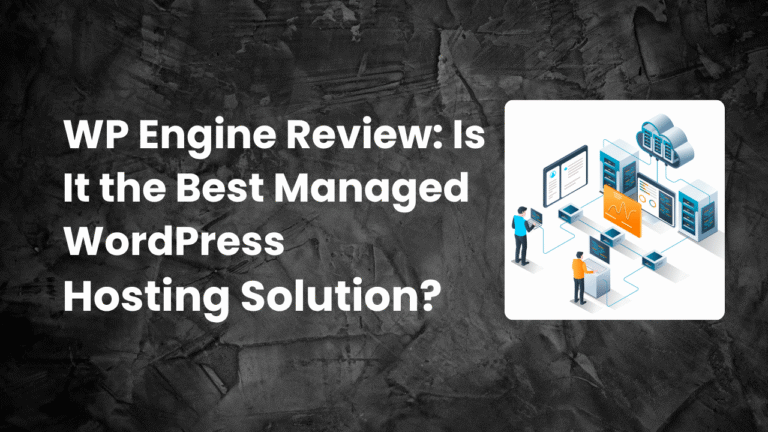Shared web hosting powers over 60% of all websites worldwide, according to W3Techs. It’s the go-to choice for bloggers, small businesses, and startups—thanks to its affordability (as low as $2.75/month) and ease of use.
Here’s the truth: Shared web hosting isn’t the problem. The real issue? Most people don’t optimize it properly.
The good news? You don’t need to switch to expensive VPS or dedicated hosting just yet. With the right tweaks, you can double your website’s speed, lock down security, and handle more traffic—all while staying on a budget-friendly shared server.
In this guide, you’ll get 10 battle-tested hacks used by web hosting experts to squeeze every drop of performance from shared hosting. Whether you’re running a blog, small business site, or even a growing eCommerce store, these strategies will help you compete with bigger, more expensive setups.
What is Shared Web Hosting?
Shared web hosting means your website shares server resources (CPU, RAM, disk space) with hundreds of other sites. Think of it like renting an apartment in a large building—you get your own space, but utilities are shared.
Key Features:
- Low Cost ($2–$10/month).
- Managed Maintenance (host handles updates, security).
- Beginner-Friendly (one-click installs for WordPress, Joomla, etc.).
Best For:
- Low-traffic eCommerce stores
- Personal blogs
- Small business websites
When Should You Upgrade from Shared Hosting? Upgrade if:
- Traffic exceeds 50,000 monthly visits.
- You need custom server software (Node.js, Ruby on Rails).
- Your site frequently crashes due to resource limits.
Benefits of Shared Web Hosting for Beginners
For those just stepping into the world of web development, shared web hosting offers several advantages. Firstly, it’s affordable, allowing users to get started without a substantial financial investment. Secondly, most shared hosting providers come with user-friendly interfaces, which simplify the process of website management. Moreover, these services often include built-in features such as one-click installations for popular content management systems (CMS) like WordPress, making it easier to launch your website quickly.
Assess Your Website Needs
Before diving into the selection of a hosting provider, take some time to assess your website’s needs. Consider the type of website you are building—whether it’s a blog, an online store, or a portfolio site. Each of these will have different requirements in terms of storage space, bandwidth, and additional features. If you plan to run a content-heavy site, ensure the hosting plan accommodates high storage capacities. Conversely, if your site is simpler, you might not need as much space.
Additionally, consider your expected traffic. If you anticipate a small number of visitors starting out, a basic shared hosting plan may suffice. However, if you expect rapid growth, you should look for a provider that offers easy upgrades or scalable plans.
Research Hosting Providers
Once you have a clear understanding of your needs, it’s time to research potential hosting providers. Numerous companies offer shared hosting services, and their features can vary significantly. Look for companies with a solid reputation and a history of reliability. Websites like HostingAdvice or CNET provide reviews and comparisons that can help you identify trustworthy providers.
Pay attention to important metrics such as server locations, the technology they use, and the range of services offered. Choosing a hosting provider with data centers close to your target audience can improve website speed and performance.
Compare Pricing and Plans
When comparing hosting providers, pricing is a crucial factor. Typically, shared hosting plans are offered at a low introductory rate, but renewals can be significantly more expensive. Make sure to read the fine print regarding renewal rates, contract terms, and any additional fees that might apply.
It’s also wise to compare the different plans offered by each provider. Some may have tiered pricing based on features such as increased storage, bandwidth, or number of websites allowed. Choose a plan that not only fits your budget but also aligns with your current needs and potential future growth.
Check for Uptime Guarantees
Uptime refers to the amount of time your website is accessible to users. A good hosting provider should guarantee a minimum uptime of 99.9%. Downtime can have serious repercussions for your website, including lost traffic and revenue, especially if you’re running an online business. Ensure you check reviews and uptime statistics of potential providers to confirm their reliability.
Some hosting providers also offer compensation for significant downtimes, which can be an added benefit. Always prefer providers who take uptime seriously and have a track record to back it up.
Evaluate Customer Support Options
Customer support is another essential factor when selecting a hosting provider. As a beginner, you may encounter various issues that require assistance, and having accessible, knowledgeable support can make all the difference. Look for providers that offer 24/7 support through multiple channels, including live chat, phone, and email.
Additionally, review the provider’s knowledge base and community forums. A well-documented support section can be a valuable resource for troubleshooting common issues and learning more about managing your website effectively.
Look for User-Friendly Control Panels
The control panel is the interface through which you will manage your website and hosting account. A user-friendly control panel can significantly ease the management of your website. Most reputable hosting providers offer cPanel, which is widely recognized for its intuitive design.
Ensure that the control panel allows you to easily manage your domains, email accounts, files, and databases. Some hosts also provide custom control panels that might have unique functionalities or an easier interface, so check reviews on these as well.
Consider Scalability Options
As your website grows, your hosting needs may change. When choosing a shared hosting provider, consider their scalability options. Look for providers that offer easy upgrades to VPS (Virtual Private Server) or dedicated hosting plans should your site outgrow shared hosting.
Scalability will save you the hassle of migrating to a different hosting provider in the future. It’s also a good idea to check if the provider has a money-back guarantee, allowing you to test their service risk-free.
Read Customer Reviews and Testimonials
Customer reviews can provide invaluable insights into the reliability and quality of a hosting provider. Websites like Trustpilot or G2 allow users to share their experiences, which can help you identify potential issues. Look for patterns in complaints or praises, as these can be indicative of the provider’s overall service quality.
Also, consider reaching out to any contacts you may have in the industry to get personal recommendations. Word-of-mouth can often lead you to reliable services that may not be as prominent in online search results.
Verify Security Features
Security is a top priority for any website owner, especially if you plan to handle sensitive information such as customer data or payment information. When selecting a shared hosting provider, verify the security features they offer. Look for features such as SSL certificates, firewalls, and malware scanning.
Additionally, check if the hosting provider offers automatic backups. Regular backups can provide peace of mind, ensuring that your data is safe in case of a security breach or technical issues. A good provider will have these systems in place, ensuring the integrity and safety of your website.
Understand the Terms of Service
Lastly, always read the terms of service (ToS) before committing to a hosting plan. The ToS will outline the provider’s policies regarding usage, data, and any limitations. Understanding these terms can help avoid potential issues down the line, such as unexpected charges or restrictions on your website’s content.
Pay special attention to the refund policy, cancellation terms, and the provider’s approach to account suspension. Knowing these details will help ensure a smooth hosting experience from the outset.
Conclusion
Shared hosting is one of the easiest and most affordable ways to bring your website to life. Don’t overthink it—start simple, stay focused, and grow as you go.
With the right hosting provider, you’ll have the support and resources necessary to create a successful website, whether it’s a personal blog or a business venture. Take your time, do your research, and choose wisely!
So, if you’re still on the fence: yes, shared hosting is a smart choice to get started.
And if you want a beginner-friendly provider with fast speeds, strong security, and unbeatable pricing, check out Hostinger—it’s a great way to hit the ground running.
FAQs
What are the main advantages of shared web hosting?
Shared web hosting is cost-effective, user-friendly, and typically requires less technical knowledge, making it ideal for beginners. It allows multiple websites to share resources, lowering the total cost.
How much should I expect to pay for shared hosting?
Prices for shared hosting can range from $2 to $10 per month for basic plans, with additional costs for extra features or higher-tier services. Always check renewal rates, as they can be significantly higher than the introductory price.
What is an uptime guarantee, and why is it important?
An uptime guarantee is a commitment from the hosting provider regarding the percentage of time their servers will be operational. An uptime of 99.9% or higher is considered acceptable and ensures minimal downtime for your website.
How can I migrate my website to another host in the future?
Migrating your website generally involves backing up your files and databases, transferring them to the new host, and updating your domain settings. Most reputable hosting providers offer migration assistance to ease this process.
Do I need to be tech-savvy to use shared hosting?
No, shared hosting is designed to be user-friendly, with many providers offering simple control panels and one-click installations. Basic technical knowledge will help, but you can manage most tasks without extensive expertise.






Pingback: The Ultimate Web Hosting Guide for 2025: Unlock Lightning-Fast Website Success - basondha